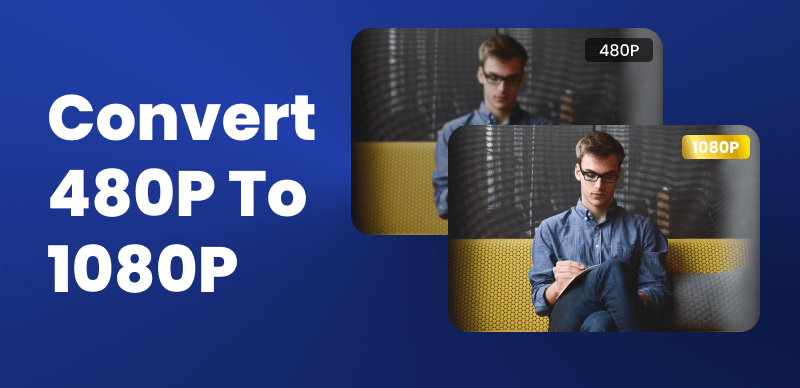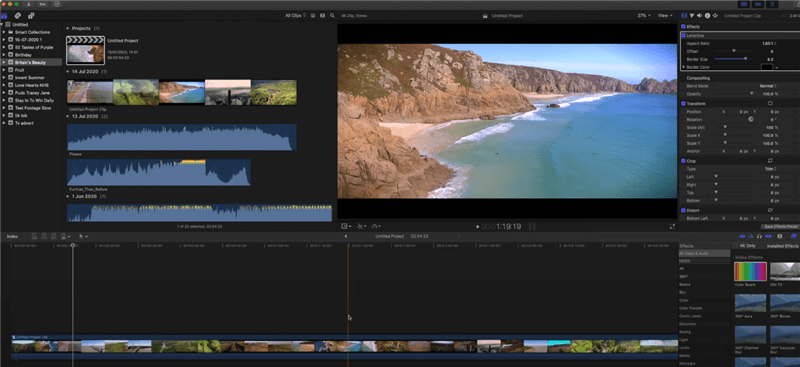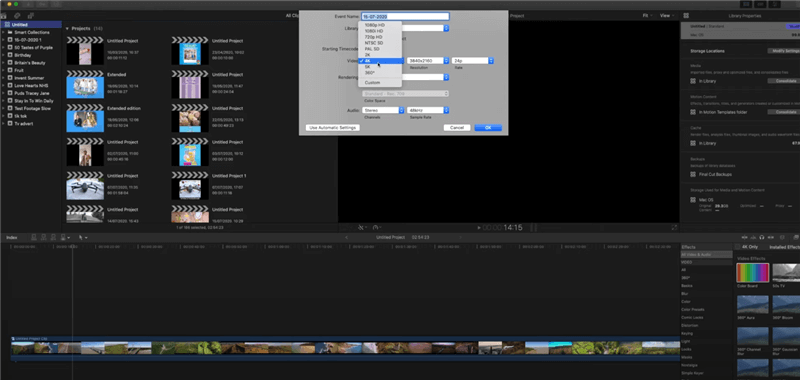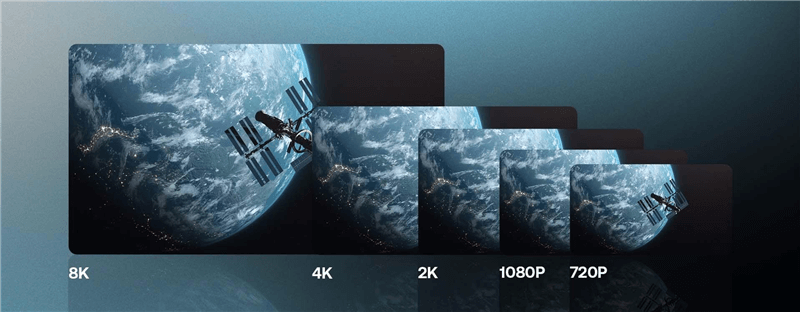Upgrading the resolution of a video from 480p to 1080p can greatly enhance its visual quality and clarity. Although it’s important to note that true 1080p footage is captured at a higher resolution, there are methods available to upscale SD to HD videos using video editing software and upscaling techniques. In this guide, we will explore various approaches and steps to help you make the transition from 480p to 1080p, providing you with the opportunity to enhance your videos and achieve a more immersive viewing experience.

Make 480P to 1080P
Can I Convert 480P to 1080P?
Converting a video from 480p to 1080p involves increasing the resolution of the original video, which can be done using various video enhancement techniques. However, it’s important to note that simply upscaling the resolution does not add additional detail or improve the quality of the original video.

Convert 480P to 1080P
The process may result in a larger file size and a visually larger image, but the actual level of detail and clarity will remain the same as the original 480p video. True high-definition footage is captured at a higher resolution, so while upscaling can provide a larger output size, it does not truly enhance the quality to match native 1080p footage.
Is There a Big Difference Between 480p and 1080p?
Yes, there is a significant difference between 480p and 1080p video resolutions. The term “p” stands for progressive scan, which refers to the number of horizontal lines of pixels that make up the video image.

Differences Between 480p and 1080p
In the case of 480p (standard definition), the video has a resolution of 720×480 pixels (NTSC) or 720×576 pixels (PAL). This resolution provides a relatively low level of detail and clarity, especially when viewed on larger screens or high-definition displays. The image may appear somewhat pixelated or less sharp compared to higher-resolution formats; On the other hand, 1080p (high definition) video has a resolution of 1920×1080 pixels, which offers significantly more detail, sharpness, and clarity. With 1080p, you can see finer details, smoother edges, and a more immersive viewing experience, particularly on larger screens or high-definition displays. The increased pixel density results in a more lifelike and visually appealing image.
The difference between 480p and 1080p becomes more pronounced when viewed on larger screens or when used for applications that require higher visual fidelity, such as gaming, professional video editing, or watching high-definition content. However, it’s important to note that the perceived difference also depends on factors such as the viewing distance, screen size, video content, and individual visual acuity.
In summary, the gap between 480p and 1080p in terms of image quality and detail is quite significant, with 1080p providing a much higher level of visual fidelity and an overall superior viewing experience.
How to Upscale a Video from 480P to 1080P?
Final Cut Pro is a professional video editing software that offers a wide range of features and tools, including the ability to enhance videos from 480p to 1080p resolution. With its intuitive interface and powerful capabilities, Final Cut Pro allows users to upscale videos while preserving as much detail and quality as possible. Through advanced video processing algorithms, Final Cut Pro enables users to resize, enhance, and optimize the visual appearance of videos, resulting in improved clarity, sharpness, and overall visual fidelity. By utilizing Final Cut Pro as a 480p to 1080p video enhancer, users can take their lower-resolution footage and transform it into high-definition content suitable for a variety of professional applications, including film production, broadcasting, and online content creation.
Here is a step-by-step guide on how to upscale videos from 480P to 1080P via Final Cut Pro.
Step 1. Open Final Cut Pro. Click on “File” in the menu bar and select “New Project.” Set the project settings to match the desired 1080p resolution (1920×1080 pixels).
Step 2. Click the “Import Media” button or drag and drop the 480p video file into the Final Cut Pro media library.

Import Media from Your Computer
Step 3. Drag the imported video from the media library and drop it onto the timeline at the bottom of the Final Cut Pro interface. Click on the video clip in the timeline to select it.
Step 4. In the top-right corner of the Final Cut Pro interface, click on the “Inspector” button to open the Video Inspector panel. In the Video Inspector panel, navigate to the “Transform” tab. Adjust the “Scale” parameter to increase the size of the video. You can manually enter a value or use the slider to set it to 200% to match the 1080p resolution.

Upscale a Video from 480P to 1080P
Step 5. Play back the video in the preview window to assess the upscaling results. If necessary, make further adjustments to optimize the visual quality. Once you are satisfied with the upscaling results, click on “File” in the menu bar and select “Share” to export the video. Choose the appropriate export settings, such as format, resolution, and quality, and follow the on-screen instructions to render and save the upscaled video.
What is the Best Quality Video Resolution?
The best quality video resolution depends on the specific context and purpose of the video. There are several commonly used video resolutions, each with its advantages and considerations:

What is the Best Quality Video Resolution
- Standard Definition (SD): SD video typically has a resolution of 720×480 pixels (NTSC) or 720×576 pixels (PAL). While SD offers lower image quality compared to high-definition formats, it can still be suitable for certain applications, such as older playback devices, or when file size or bandwidth constraints are a concern.
- High Definition (HD): HD video provides a significant improvement in image quality compared to SD. The most common HD resolutions are 720p (1280×720 pixels) and 1080p (1920×1080 pixels). These resolutions are widely used for television broadcasts, streaming platforms, and consumer video playback.
- Ultra High Definition (UHD): UHD, also known as 4K, offers even higher resolution and increased detail. The two main UHD resolutions are 3840×2160 pixels (commonly referred to as 4K UHD) and 4096×2160 pixels (DCI 4K). UHD is commonly used for high-quality video production, digital cinema, and streaming platforms that support 4K content.
- 8K and beyond:8K resolution (7680×4320 pixels) and higher are considered the next generation of video quality. These resolutions offer an incredibly high level of detail and are primarily used in specialized applications such as professional video production, scientific imaging, or large-scale displays.
It’s worth noting that the optimal resolution for a video depends on factors such as the intended display or playback device, available bandwidth, storage capacity, and the specific needs of the project. Higher resolutions generally require more storage space, higher processing power, and greater bandwidth for transmission and playback. Therefore, it is important to consider the practical limitations and requirements of the intended use when determining the best video resolution.
Final Thought
In conclusion, while it is possible to upscale a video from 480p to 1080p using video editing software and upscaling techniques, it’s important to understand the limitations of this process. Upscaling cannot magically recreate the level of detail and quality that is inherent in native 1080p footage. However, with the right tools and techniques, you can improve the visual appearance of your videos and achieve a higher-resolution output. Remember to choose a reliable video editing software that supports upscaling and experiment with different upscaling algorithms to find the one that yields the best results for your specific video. Keep in mind that the outcome will ultimately depend on the quality of the original footage and the effectiveness of the upscaling methods employed.
